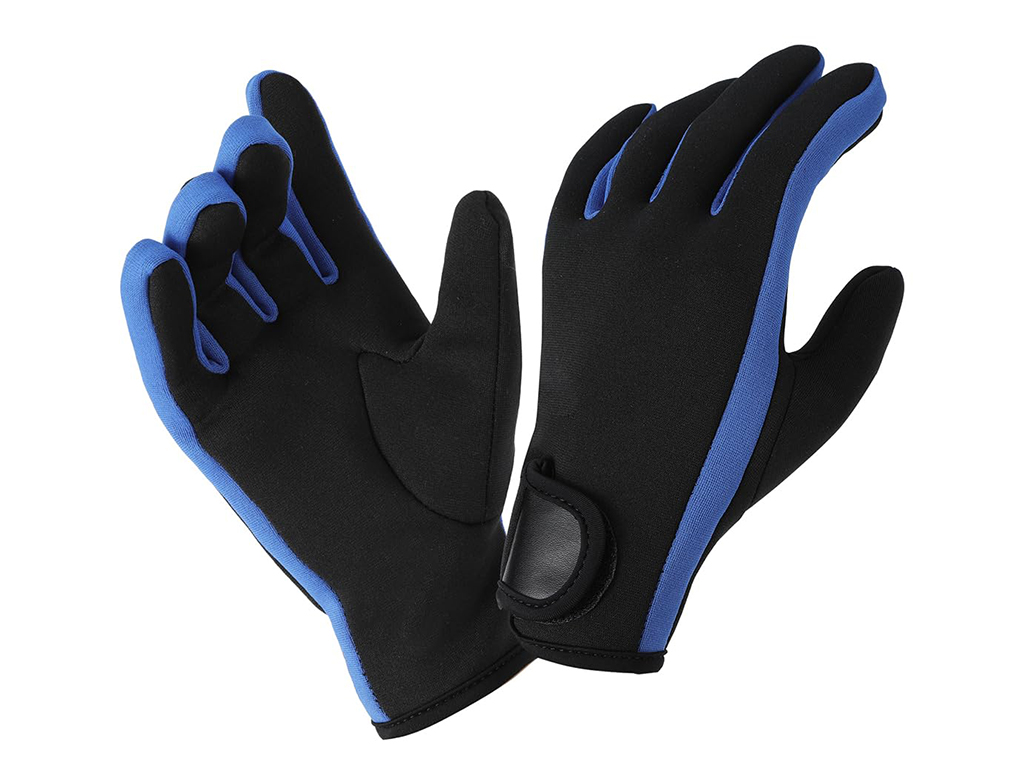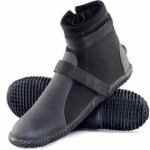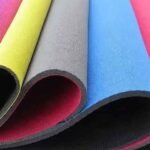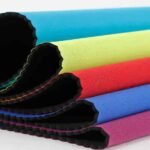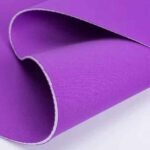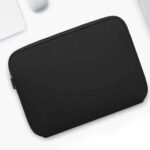Have you ever needed a glove that offers both exceptional protection and unmatched flexibility? Imagine working in harsh chemical environments, diving into cold waters, or engaging in intense industrial tasks—all while keeping your hands safe and comfortable. This is where neoprene gloves come into play. Neoprene gloves provide a unique combination of durability, comfort, and functionality that makes them indispensable across various industries. If you’re a brand owner, wholesaler, or retailer looking to understand the diverse applications of neoprene gloves, this comprehensive guide is for you.
Neoprene gloves are versatile protective gear used in numerous industries for their flexibility, durability, and resistance to environmental hazards.
I remember the first time I saw the impact a pair of high-quality neoprene gloves had on a client’s operations. Their workers could handle hazardous materials with ease, and the gloves maintained their integrity even after prolonged use. This experience highlighted the essential role neoprene gloves play in both safety and performance.
What Are Neoprene Gloves?
Neoprene gloves are protective handwear made from neoprene, a synthetic rubber known for its flexibility, durability, and resistance to various environmental factors. They are designed to provide comfort, protection, and enhanced grip in a wide range of applications.
Neoprene gloves are versatile and widely used due to their unique material properties, offering protection against chemicals, temperature extremes, and physical hazards.
I recall working with a client in the chemical industry who switched to neoprene gloves after facing issues with their previous gloves. The neoprene gloves provided superior protection and comfort, significantly reducing workplace injuries and increasing productivity.
What Makes Neoprene Unique?
Neoprene, also known as polychloroprene, is a synthetic rubber that offers excellent elasticity, chemical stability, and resistance to degradation. These properties make neoprene an ideal material for gloves that need to withstand harsh conditions while maintaining flexibility and comfort.
Key Features of Neoprene Gloves
- Flexibility: Allows for a wide range of motion and dexterity.
- Durability: Resistant to tears, punctures, and abrasion.
- Insulation: Provides thermal protection in cold environments.
- Chemical Resistance: Protects against oils, acids, and other hazardous substances.
- Waterproofing: Keeps hands dry in wet conditions.
| Feature | Benefit | Application |
|---|---|---|
| Flexibility | Enhanced dexterity and movement | Industrial work, sports |
| Durability | Long-lasting use without wear and tear | Construction, automotive |
| Insulation | Protection against cold temperatures | Outdoor activities, refrigeration |
| Chemical Resistance | Safe handling of hazardous materials | Laboratories, chemical processing |
| Waterproofing | Keeps hands dry and comfortable | Water sports, fishing, boating |
Where Are Neoprene Gloves Used?
Neoprene gloves are essential in various industries, including healthcare, construction, automotive, diving, and food processing. Their versatility and protective qualities make them suitable for both professional and recreational use.
Neoprene gloves find applications across multiple sectors due to their ability to provide protection, enhance performance, and ensure comfort in demanding environments.
I’ve seen neoprene gloves used in everything from medical settings to extreme sports. Each industry leverages the unique properties of neoprene to meet specific safety and functionality requirements, ensuring that workers and enthusiasts alike are well-protected and comfortable.
Healthcare
In the healthcare sector, neoprene gloves provide protection against bodily fluids and chemicals used in medical procedures. Their comfort and flexibility ensure that healthcare professionals can perform tasks with precision and ease.
Construction and Industrial Work
Construction workers use neoprene gloves to protect their hands from sharp objects, chemicals, and extreme temperatures. The durability and grip provided by neoprene gloves enhance safety and efficiency on the job site.
Automotive
Automotive technicians rely on neoprene gloves for their resistance to oils, grease, and other automotive fluids. The gloves offer both protection and dexterity, allowing for detailed work without compromising safety.
Diving and Water Sports
For divers and water sports enthusiasts, neoprene gloves offer thermal insulation and protection from marine life and underwater hazards. They enhance grip and comfort, making underwater activities safer and more enjoyable.
Food Processing
In the food industry, neoprene gloves ensure hygiene and protection while handling food products. Their chemical resistance also allows workers to handle cleaning agents and sanitizers safely.
| Industry | Application | Benefits |
|---|---|---|
| Healthcare | Medical procedures, protection against fluids | Hygiene, flexibility, chemical resistance |
| Construction | Handling tools, protection from chemicals | Durability, grip, thermal insulation |
| Automotive | Working with fluids, detailed repairs | Chemical resistance, dexterity |
| Diving and Water Sports | Underwater activities, protection from hazards | Thermal insulation, waterproofing |
| Food Processing | Handling food products, sanitation | Hygiene, chemical resistance |
What Do Neoprene Gloves Protect Against?
Neoprene gloves offer protection against a variety of hazards, including chemicals, extreme temperatures, physical abrasions, and moisture. Their robust material properties ensure that users are shielded from potential dangers in their respective environments.
Neoprene gloves safeguard hands from environmental hazards, enhancing safety and allowing users to perform tasks with confidence and ease.
Chemical Protection
Neoprene gloves are highly resistant to many chemicals, including acids, alkalis, oils, and solvents. This makes them ideal for use in laboratories, chemical processing plants, and automotive workshops where exposure to hazardous substances is common.
Abrasion and Tear Resistance
The durable nature of neoprene protects hands from cuts, abrasions, and tears. This is particularly important in construction, manufacturing, and outdoor activities where hands are frequently exposed to rough surfaces and sharp objects.
Temperature Resistance
Neoprene gloves offer excellent thermal insulation, protecting hands from extreme cold and heat. They are suitable for use in environments where temperature control is critical, such as cold storage facilities or high-temperature industrial processes.
Waterproofing
Waterproof neoprene gloves keep hands dry in wet conditions, enhancing comfort and safety. This feature is essential for water sports, fishing, and tasks that involve exposure to moisture.
| Protection Type | Benefit | Application |
|---|---|---|
| Chemical Protection | Shields hands from harmful substances | Laboratories, automotive, chemical plants |
| Abrasion Resistance | Prevents cuts and tears | Construction, manufacturing |
| Temperature Resistance | Protects against extreme temperatures | Cold storage, high-heat industrial work |
| Waterproofing | Keeps hands dry and comfortable | Water sports, fishing, outdoor tasks |
Do Neoprene Gloves Keep You Warm?
Yes, neoprene gloves are designed to provide thermal insulation, keeping your hands warm in cold environments. Their neoprene material traps a layer of air, which acts as an insulating barrier against the cold. This makes them ideal for outdoor activities such as fishing, diving, and winter sports, as well as for workers in refrigerated environments.
Neoprene gloves effectively maintain hand warmth by insulating against cold temperatures, making them suitable for both recreational and professional use in chilly conditions.
I remember a winter project where workers needed gloves that could withstand low temperatures without sacrificing dexterity. Neoprene gloves were the perfect solution, keeping their hands warm and allowing them to work efficiently despite the harsh weather.
Neoprene’s insulating properties come from its structure, which traps air within the material. Air is a poor conductor of heat, so this trapped air reduces the transfer of cold from the environment to your hands. Additionally, neoprene gloves can be lined with additional insulating materials for enhanced warmth.
Layered Insulation Techniques
Some neoprene gloves feature multiple layers to boost insulation. For example, an inner layer might be made of a soft, breathable fabric to wick away moisture, while an outer layer provides the primary insulation and protection from the elements.
Comparisons with Other Materials
Compared to other glove materials like leather or cotton, neoprene offers superior thermal insulation without compromising flexibility. Leather can become stiff in cold temperatures, and cotton absorbs moisture, making neoprene gloves a more reliable choice for maintaining warmth and comfort.
| Feature | Neoprene Gloves | Other Materials |
|---|---|---|
| Thermal Insulation | Excellent, traps air effectively | Moderate (leather stiffens, cotton absorbs moisture) |
| Flexibility | High | Varies (leather can stiffen) |
| Moisture Resistance | Waterproof | Variable (cotton absorbs moisture) |
| Comfort | Soft and flexible | Can be uncomfortable in cold |
How Do Neoprene Gloves Enhance Performance?
Neoprene gloves enhance performance by providing superior grip, flexibility, and protection. They enable users to handle tasks more efficiently and safely, whether in industrial settings, sports, or daily activities.
Neoprene gloves improve user performance by offering enhanced grip, increased flexibility, and reliable protection, allowing for greater efficiency and safety in various tasks.
Neoprene gloves often feature textured surfaces that improve grip, reducing the likelihood of slips and accidents. This is particularly important in wet or oily environments where maintaining control is crucial.
The elastic nature of neoprene allows gloves to move with the hands, providing a snug fit without restricting motion. This flexibility is essential for tasks that require precision and dexterity, such as handling tools, machinery, or delicate equipment.
Superior Grip
Neoprene gloves are designed with textured palms and fingers to enhance grip. This feature is crucial for tasks that involve handling slippery or heavy objects, ensuring that users maintain control and reduce the risk of accidents.
Enhanced Flexibility
Neoprene’s elasticity allows gloves to conform to the shape of the hand, providing a comfortable fit that doesn’t restrict movement. This flexibility is essential for activities that require fine motor skills, such as assembling components or performing detailed repairs.
Additional Features for Performance
Some neoprene gloves incorporate specialized features like reinforced knuckles, additional padding, or ergonomic designs to further enhance performance. These features provide extra protection and comfort, enabling users to perform tasks more effectively and with less fatigue.
| Performance Aspect | Benefit | Example |
|---|---|---|
| Grip | Reduces slips and accidents | Handling tools in construction |
| Flexibility | Allows precise movements | Performing detailed repairs in automotive |
| Thermal Protection | Keeps hands warm in cold environments | Outdoor sports, diving |
| Chemical Resistance | Protects against harmful substances | Laboratories, chemical processing |
Do Neoprene Gloves Offer Superior Protection?
Yes, neoprene gloves provide superior protection against a variety of hazards, including chemicals, abrasions, temperature extremes, and water. Their robust material properties ensure that users are well-protected in demanding environments.
Neoprene gloves offer exceptional protection by shielding hands from environmental hazards while maintaining comfort and flexibility, making them ideal for high-risk and demanding tasks.
Neoprene gloves are engineered to offer comprehensive protection. Their chemical-resistant properties make them suitable for handling hazardous substances, while their durable construction guards against physical abrasions and tears. Additionally, their insulating capabilities protect against extreme temperatures, ensuring hands remain safe and functional in diverse conditions.
Chemical Protection
Neoprene gloves are highly resistant to many chemicals, including acids, alkalis, oils, and solvents. This makes them ideal for use in laboratories, chemical processing plants, and automotive workshops where exposure to hazardous substances is common.
Abrasion and Tear Resistance
The durable nature of neoprene protects hands from cuts, abrasions, and tears. This is particularly important in construction, manufacturing, and outdoor activities where hands are frequently exposed to rough surfaces and sharp objects.
Temperature Resistance
Neoprene gloves offer excellent thermal insulation, protecting hands from extreme cold and heat. They are suitable for use in environments where temperature control is critical, such as cold storage facilities or high-temperature industrial processes.
Waterproofing
Waterproof neoprene gloves keep hands dry in wet conditions, enhancing comfort and safety. This feature is essential for water sports, fishing, and tasks that involve exposure to moisture.
| Protection Type | Benefit | Application |
|---|---|---|
| Chemical Protection | Shields hands from harmful substances | Laboratories, automotive, chemical plants |
| Abrasion Resistance | Prevents cuts and tears | Construction, manufacturing |
| Temperature Resistance | Protects against extreme temperatures | Cold storage, high-heat industrial work |
| Waterproofing | Keeps hands dry and comfortable | Water sports, fishing, outdoor tasks |
Are Neoprene Gloves Comfortable for Long-Term Use?
Yes, neoprene gloves are designed for comfort during extended wear. Their soft texture, elasticity, and breathable properties ensure that users can wear them for long periods without discomfort or fatigue.
Neoprene gloves are crafted to provide lasting comfort, making them suitable for prolonged use in various settings without causing hand fatigue or irritation.
Neoprene gloves are often designed with ergonomic features that contour to the shape of the hand. This design minimizes strain and maximizes comfort, allowing users to wear the gloves for extended periods without experiencing discomfort.
Soft and Flexible Material
The softness and flexibility of neoprene make the gloves comfortable to wear. Unlike rigid materials, neoprene adapts to the movement of the hand, providing a snug fit that doesn’t restrict motion.
Breathability and Moisture Control
Many neoprene gloves incorporate breathable panels or moisture-wicking linings to keep hands dry and comfortable. This feature prevents excessive sweating and reduces the risk of skin irritation during prolonged use.
Lightweight Construction
Neoprene gloves are typically lightweight, which adds to their comfort. The lightweight nature ensures that the gloves do not add unnecessary bulk or weight to the hands, allowing for natural movement and reduced fatigue.
| Comfort Feature | Benefit | Example |
|---|---|---|
| Ergonomic Design | Reduces hand strain and fatigue | Long work shifts in construction |
| Soft Material | Comfortable fit without irritation | Extended use in medical settings |
| Breathability | Keeps hands dry and prevents sweating | Handling food products in food processing |
| Lightweight Construction | Enhances mobility and reduces fatigue | Outdoor sports and recreational use |
Which Customization Options Are Available for Neoprene Gloves?
Absolutely. Neoprene gloves come in various styles, colors, and designs, and can be customized with logos, patterns, and special features to align with your brand identity and meet specific user needs.
Customization options for neoprene gloves include a wide range of colors, logos, patterns, and functional enhancements, allowing brands to create unique and branded products that resonate with their target audience.
When customizing, consider both form and function. A sleek design might be visually appealing, but does it resonate with the event’s vibe? A bright pattern could grab attention, but does it align with your brand’s values?
Style Variations
- Full-Finger Gloves: Offer complete hand protection, suitable for cold environments and high-risk tasks.
- Half-Finger Gloves: Provide flexibility and comfort, ideal for light-duty tasks and activities requiring dexterity.
- Gauntlet Gloves: Extend up the forearm, offering additional protection against splashes and abrasions.
Design and Branding Options
- Color Customization: Brands can choose from a wide palette to match their logo or seasonal themes.
- Logo Placement: Logos can be embroidered, printed, or laser-engraved for maximum visibility and durability.
- Patterns and Graphics: Unique patterns or graphics can be added to enhance the visual appeal and align with brand identity.
Functional Enhancements
- Reinforced Palms: Additional protection for heavy-duty use.
- Special Coatings: Anti-slip or waterproof coatings improve grip and functionality.
- Ventilation Features: Mesh inserts or breathable panels enhance comfort during extended use.
| Customization Aspect | Options | Benefit |
|---|---|---|
| Style | Full-finger, half-finger, gauntlet | Tailored protection and flexibility |
| Color | Wide range of colors to match branding | Enhanced brand alignment |
| Logo Placement | Embroidery, printing, laser engraving | Increased brand visibility |
| Functional Features | Reinforced palms, special coatings, ventilation | Improved durability and user comfort |
How to Choose the Right Neoprene Glove Manufacturer?
Selecting the right neoprene glove manufacturer involves evaluating their experience, material quality, customization capabilities, lead times, pricing, and communication responsiveness. A reliable manufacturer ensures that your gloves meet high standards and are delivered on time, enhancing your brand’s reputation and customer satisfaction.
Choosing the right partner is crucial for maintaining product quality and meeting market demands. A manufacturer that understands your specific needs and can adapt to your requirements will help you succeed in a competitive marketplace.
To choose the right manufacturer, you need to assess several key factors. These include their experience in the industry, the quality of materials they use, their ability to customize products according to your specifications, their production capacity and lead times, pricing structures, and the quality of their communication and support. Additionally, consider their sustainability practices if environmental responsibility is important to your brand.
Experience and Expertise
A manufacturer with extensive experience in producing neoprene gloves understands the nuances of the material and can offer valuable insights into the best practices for creating high-quality products. Look for a partner with a proven track record and positive client testimonials.
Material Quality and Compliance
High-quality materials ensure the durability and functionality of your gloves. Ensure that the manufacturer sources premium neoprene and adheres to international quality and safety standards. Certifications and compliance with industry regulations are essential indicators of a reliable manufacturer.
Customization Capabilities
The ability to customize gloves according to your specific requirements is a significant advantage. This includes offering a wide range of colors, designs, and functional features. A flexible manufacturer can help you create unique products that stand out in the market.
Production Capacity and Lead Times
Assess the manufacturer’s ability to handle your order volume and meet your deadlines. Reliable lead times are crucial, especially during peak seasons or for large-scale orders. A manufacturer with advanced production lines and efficient processes can ensure timely delivery without compromising quality.
Pricing and Value
While competitive pricing is important, it should not come at the expense of quality. Compare quotes from different manufacturers to find a balance between cost and value. Consider factors such as bulk discounts, customization fees, and shipping costs when evaluating pricing.
Communication and Support
Effective communication is vital for a smooth manufacturing process. Choose a manufacturer that is responsive, transparent, and willing to collaborate closely with you. Good customer support can help resolve issues quickly and keep your projects on track.
Sustainability Practices
If environmental responsibility is a priority for your brand, consider a manufacturer that implements sustainable practices. This includes using eco-friendly materials, reducing waste, and adhering to ethical labor standards. Sustainable manufacturing not only benefits the environment but also appeals to eco-conscious consumers.
| Selection Criterion | What to Look For | Why It Matters |
|---|---|---|
| Experience | Years in the industry, client testimonials | Ensures expertise and reliability |
| Material Quality | Premium neoprene, compliance certifications | Guarantees durability and safety |
| Customization | Wide range of options, flexible processes | Aligns products with brand identity |
| Production Capacity | Ability to handle large orders, scalable | Meets demand without delays |
| Pricing | Competitive rates, value for money | Balances cost with quality |
| Communication | Responsive, transparent, collaborative | Facilitates smooth project management |
| Sustainability | Eco-friendly practices, ethical standards | Appeals to eco-conscious market segments |
Conclusion
Neoprene gloves are more than just protective handwear; they are versatile tools that enhance safety, performance, and brand visibility across various industries. Understanding their diverse applications—from healthcare and construction to diving and food processing—can help you leverage their full potential for your business. By selecting the right manufacturer, you can ensure that your neoprene gloves meet the highest standards of quality and functionality, while also aligning with your brand’s identity and values.
At Szoneier, we specialize in producing top-quality neoprene gloves tailored to meet the unique needs of our clients. With our advanced production lines, extensive experience, and commitment to excellence, we are your ideal partner for creating customized gloves that stand out in the market. Whether you’re a brand owner, wholesaler, or large retailer, we are here to support your business with reliable, high-performance neoprene gloves.
Ready to elevate your product offerings with premium neoprene gloves? Contact me, Eric, at info@neoprene-bag.com or visit our website www.neoprene-bag.com to discuss your requirements, request samples, and receive competitive quotes. Let Szoneier help you create gloves that not only protect but also promote your brand effectively.

